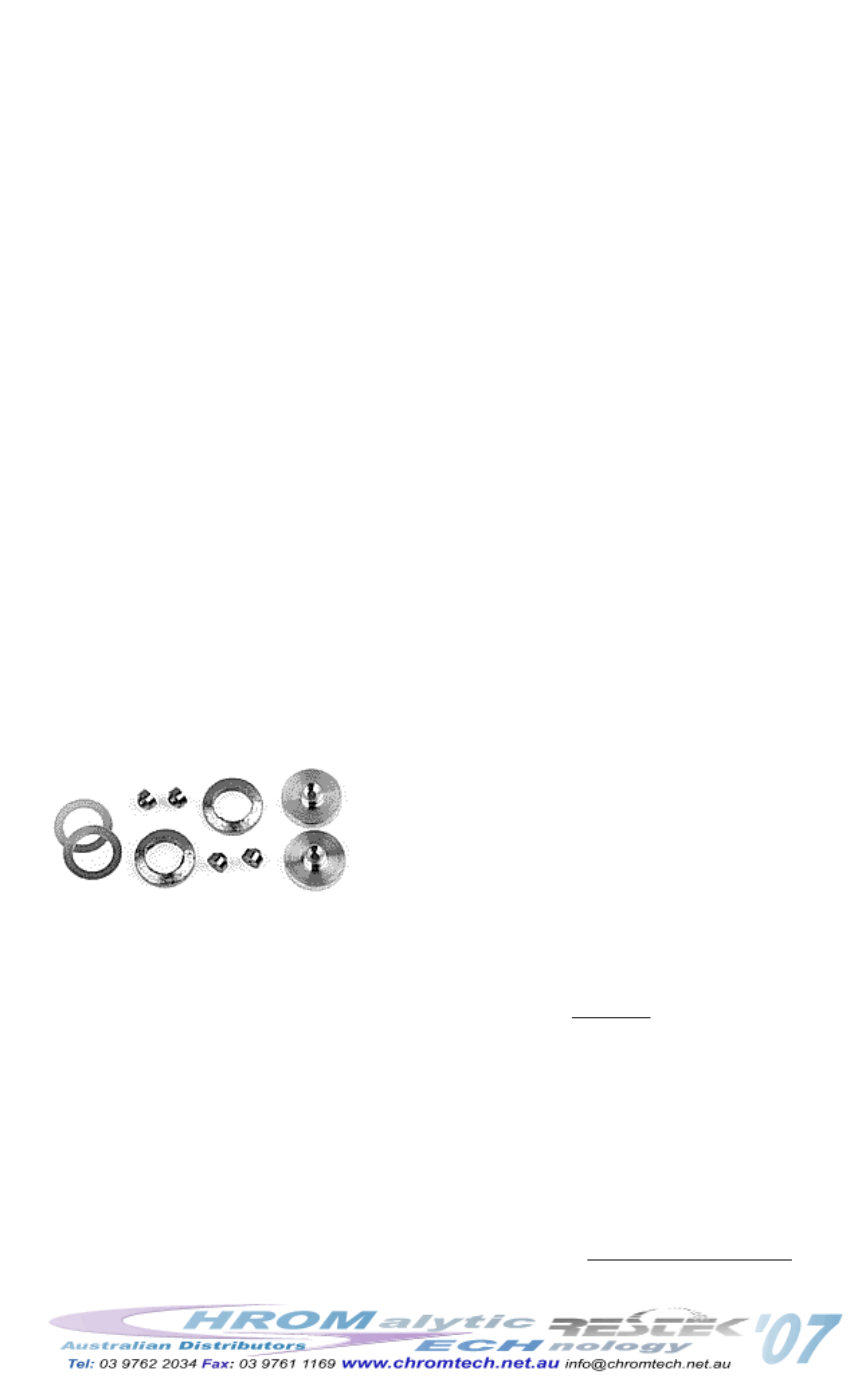
RestekCapillaryColumn InstallationGuide, Section II
550°C or using the acid-etch procedurewill remove the deactivation layer and require
sleeve resilanization. Caution - Exert extreme cautionwhen using hydrofluoric acid.
Hydrofluoric acid can cause severe burns and nerve damage if it is ingested, inhaled, or
brought into contact with the skin. Only properly trained professionals equippedwith
the appropriate safety devices should attempt to handle strong acids.
Most new sleeves received from instrument manufacturers are not deactivated. Before
optimum column performance can be achieved, sleevesmust be deactivated. Restek
has developed a unique, high temperature silanization procedure for sleeve deactivation
that ensures a highly inert surface. These sleeves can be purchased from Restek at a
cost belowmany instrument manufacturer's cost.
Refer to Restek's Chromatography Products Catalog to obtain the part number for your
specific instrument. For more information on inlet sleeves, request a copy of Restek's
bulletinOperating Hints for Split/Splitless Injectors or Guide to Direct/On-column Flash
Vaporization Injection.
ProtectionAgainst Dirty Samples
Sleeve packingmaterials such as fused silicawool (cat.# 20790), glass wool (cat.#
20789), or fused silica beads (cat.# 20791) act as filters when analyzing samples
containing highmolecular weight residue or particulates. However, bothwool and beads
greatly increase the surface area that the sample contacts and can be a source of
adsorption or breakdown. It is critical that thewool or beads be properly deactivated. If
you plan to usewool, be careful inserting it into the sleeve because active sites can be
created as the fibers break. We do not recommend using packings coatedwith
stationary phases. (For more information on protection against dirty samples, request a
copy of Restek's bulletin AGuideWhen Injecting Dirty Samples.) Alternative sleeve
designs that minimize sample interactionwith non-volatile residue are also available.
ReplacingCritical Seals
Replace the critical seal prior to installing an inlet sleeve (see instrument manual for
seal location). Most capillary injection ports use a rubber o-ring or graphite ferrule to
seal the sleeve inside the injection port body. The seal must fit tightly around the sleeve
to prevent the carrier gas from leaking around the outside of the sleeve. If your GC
uses a ferrule as the inlet seal, always pre-swage the ferrule to fit the sleeve before
tightening it in the inlet (especially Varian inlets).
ChangingSepta
Always use a high quality, low bleed septa. We recommend replacing the septum
frequently to prevent leaks and fragmentation. Otherwise, multiple injections and
continuous exposure to a hot injection port will decompose the septum, causing
particles to fall into the sleeve. Septum particles are a potential source of ghost peaks,
loss of inertness, and carrier gas flow occlusion as shown in
It is best to
install a new septum at the end of an analytical sequence so that it can condition in the
injector and reduce the incidence of ghost peaks. Always use clean forceps when
handling septa to avoid contamination.
SettingDetector andMake-upGas FlowRates
Confirm that themake-up gas, detector fuel, and oxidant flow rates are set according to
the instrument's specifications (
Table I
, below). Make-up gas flow rates set too lowwill
cause tailing solvent peaks, baseline disturbances, decreased sensitivity, and detector
noise. Some instruments do not have leak-tight detector cavities and require flow rate
verification before the column is installed into the detector. However, for GCs with leak-
tight detector cavities, it is usually easier to check detector andmake-up gas flow rates
after the column is installed. We highly recommend using the
(cat.# 21622).


